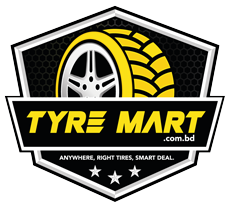Introduction: Tires are the unsung heroes of our vehicles, bearing the weight of the car and ensuring a smooth and safe ride. However, many drivers overlook one crucial aspect of tire maintenance: tire pressure. Maintaining the correct tire pressure is essential for optimal performance, fuel efficiency, and safety. In this guide, we'll delve into the importance of proper tire pressure for your car and provide valuable insights on how to maintain it effectively.
Why Tire Pressure Matters:
- Safety: Proper tire pressure ensures better traction, handling, and braking, reducing the risk of accidents, especially in adverse weather conditions.
- Fuel Efficiency: Underinflated tires increase rolling resistance, leading to decreased fuel efficiency and higher fuel consumption.
- Tire Lifespan: Overinflated or underinflated tires wear unevenly, reducing their lifespan and necessitating premature replacement.
- Comfort: Correct tire pressure contributes to a smoother and more comfortable ride by minimizing vibrations and road noise.
Determining the Correct Tire Pressure:
- Manufacturer's Recommendations: Refer to your vehicle's owner's manual or the placard located on the driver's side door jamb for the recommended tire pressure.
- Tire Pressure Gauge: Invest in a reliable tire pressure gauge to measure the pressure accurately. Check the pressure when the tires are cold for the most accurate readings.
- Regular Inspections: Make it a habit to inspect your tire pressure at least once a month or before long trips to ensure it remains within the recommended range.
Effects of Incorrect Tire Pressure:
- Underinflation: Increases the risk of tire blowouts, reduces fuel efficiency, and causes premature tire wear on the outer edges.
- Overinflation: Leads to a harsher ride, reduces traction, wears out the center of the tire tread prematurely, and increases the risk of hydroplaning on wet roads.
Maintaining Proper Tire Pressure:
- Inflate/Deflate as Needed: Use an air compressor to add air if the tires are underinflated or release air if they are overinflated.
- Check Spare Tire: Don't forget to inspect the spare tire's pressure regularly, as it's often overlooked but equally important in emergencies.
- Professional Inspection: Visit a trusted mechanic or tire shop for a comprehensive inspection and adjustment of tire pressure if necessary.
Conclusion: Proper tire pressure is a fundamental aspect of vehicle maintenance that directly impacts safety, fuel efficiency, and tire longevity. By understanding the importance of maintaining correct tire pressure and following the recommended guidelines, drivers can ensure a smoother, safer, and more economical driving experience. Make it a priority to check your tire pressure regularly and enjoy the benefits of optimal performance and peace of mind on the road.



 >
>
 >
>
 >
>
 >
>
 >
>
 >
>
 >
>
 >
>
 14" SIZE
14" SIZE
 Apollo
Apollo
 Maxxis
Maxxis
 Pirelli
Pirelli








